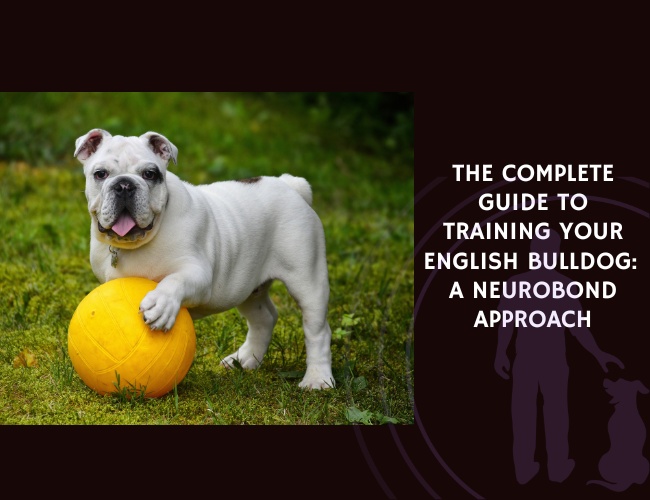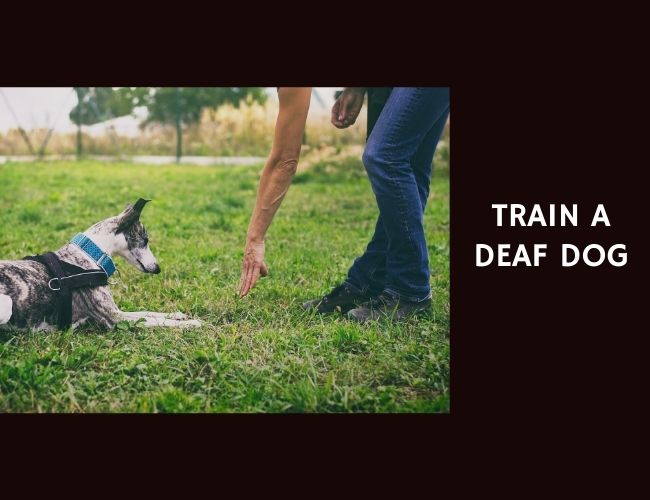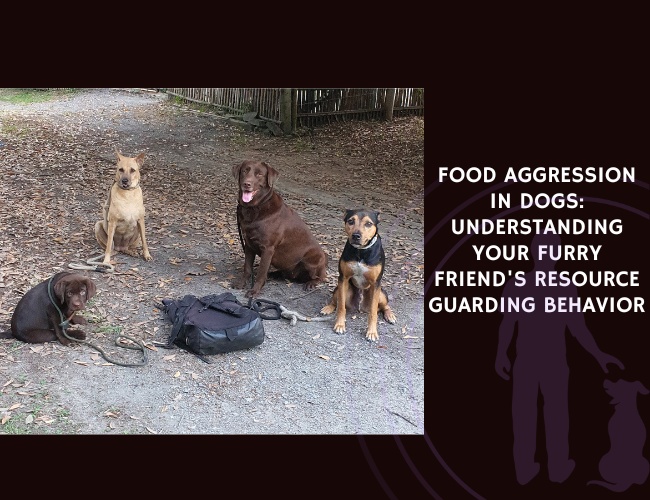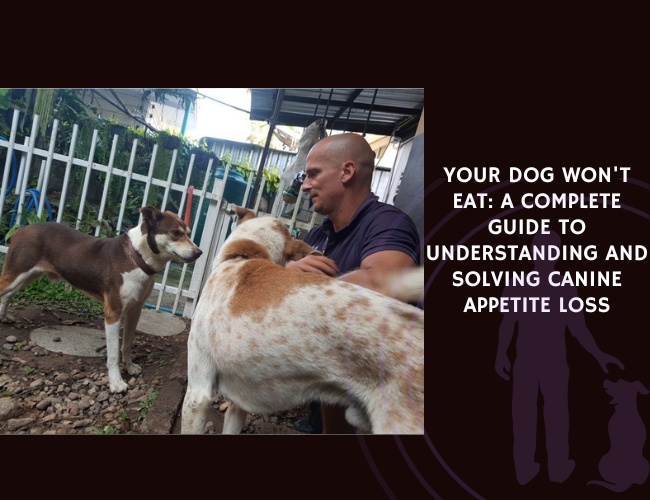Introduction
The English Bulldog stands before you with that characteristic wrinkled face and steadfast gaze — a breed that has captivated hearts for centuries while challenging conventional training wisdom at every turn. Originally bred for bull-baiting in 13th century England, today’s Bulldog carries the genetic memory of determination and independence, traits that both define and complicate their training journey.
Unlike breeds developed for eager obedience, your Bulldog arrives with what researchers call “selective deafness” — a charming way of describing their tendency to weigh every command against personal benefit. This isn’t defiance; it’s the echo of centuries-old breeding that valued autonomous decision-making over blind compliance. Understanding this fundamental truth transforms frustration into fascination and opens the door to the NeuroBond approach: a training philosophy that honors your Bulldog’s nature while building profound connection.
In this guide, we’ll explore how the NeuroBond method — which prioritizes relationship over control and instinct over obedience — aligns perfectly with your Bulldog’s unique neurological wiring and temperament. You’ll discover why traditional command-based training often fails with this breed, and how letting your Bulldog be himself while guiding his natural behaviors creates lasting behavioral change. 🧡
Character & Behavior
Understanding Your Bulldog’s Operating System
Your English Bulldog operates on what we might call “contemplative software” — every request passes through multiple filters of consideration before action. This isn’t stubbornness in the traditional sense; it’s a deeply embedded survival mechanism from their historical role.
The Bulldog Brain at Work:
- Processing Speed: While a Border Collie might execute commands instantaneously, your Bulldog pauses, evaluates, and decides. This 3-5 second delay isn’t disobedience — it’s active cognitive processing
- Memory Architecture: Bulldogs possess exceptional long-term memory, remembering specific events and associations for years. This means both positive and negative training experiences leave lasting impressions
- Emotional Depth: Your Bulldog experiences complex emotions including sulking, jealousy, and genuine contentment. They’ll literally face a wall when upset, demonstrating emotional sophistication that demands respectful training approaches
Maturity Timeline & Behavioral Evolution:
English Bulldogs mature slowly, not reaching full adulthood until 18-24 months. This extended puppyhood means:
- 5-16 weeks: Peak neuroplasticity and fearlessness — your window for foundational NeuroBond building
- 4-12 months: Testing boundaries while neural pathways solidify
- 12-24 months: Personality crystallizes; established behaviors become harder to modify
- 5+ years: Early aging begins; training must account for reduced stamina and potential health challenges
The NeuroBond approach recognizes that your Bulldog’s “selective responsiveness” isn’t a flaw but a feature. By working with this trait rather than against it, we create a training dynamic where your Bulldog chooses cooperation because the relationship matters, not because commands demand it.
Vocalization & Communication
Decoding Your Bulldog’s Unique Language
English Bulldogs communicate through a symphony of sounds that would make an opera singer envious. Understanding this vocal repertoire is essential for NeuroBond training, as each sound represents specific emotional states and needs.
The Bulldog Vocabulary:
- Snorts and Snuffles: Not just breathing difficulties — these are often contentment signals or attention-seeking behaviors
- The Bulldog Grumble: A low, rolling vocalization indicating mild protest or negotiation — your cue to reassess the training approach
- Excited Wheeze-Barks: Short, breathy barks signaling enthusiasm — perfect moments for positive reinforcement
- The Silent Stare: Perhaps their loudest communication — sustained eye contact requesting interaction or expressing displeasure
Body Language Integration:
Your Bulldog’s brachycephalic structure limits some traditional canine expressions, making subtle cues crucial:
- Ear Position: Limited mobility means watching for slight forward tilts (interest) or backward pulls (uncertainty)
- Tail Communication: The corkscrew tail speaks volumes through vibration intensity rather than position
- Stance Shifts: Weight distribution tells stories — leaning forward shows engagement, sitting back indicates resistance
In NeuroBond training, we respond to these communications as feedback, not defiance. When your Bulldog grumbles during a training session, it’s not rebellion — it’s information about comfort levels, understanding, or motivation that guides our next move.
Training & Education
The NeuroBond Method Meets Bulldog Psychology
Traditional obedience training often fails with English Bulldogs because it assumes dogs inherently desire to please through command compliance. Your Bulldog operates on a different frequency — one that the NeuroBond approach perfectly matches.
Core NeuroBond Principles Applied:
1. Let the Dog Be: Your Bulldog’s contemplative nature isn’t a training obstacle — it’s the pathway. Instead of demanding immediate sits, we create situations where sitting becomes your Bulldog’s solution. Standing on the leash during excitement naturally encourages a sit or down position. When your Bulldog discovers this solution himself, the behavior becomes internally motivated rather than externally imposed.
2. Connection Over Control: Bulldogs respond to relationship, not dominance. The NeuroBond begins with simple presence — sitting quietly with your Bulldog, allowing him to approach and engage on his terms. This builds the invisible leash of trust that makes all subsequent training possible.
3. Instinct as Teacher: Your Bulldog’s instinct to conserve energy becomes our training ally. We structure sessions around natural rest points, using their desire for comfort as reward timing. A Bulldog who learns that calm behavior leads to cozy spots and gentle massage will choose calmness.
Practical Training Structure:
Session Design (5-10 minutes maximum):
- Opening Connection: 30 seconds of quiet presence, allowing your Bulldog to “check in”
- Single Focus Goal: One behavior per session — Bulldogs shut down with complexity
- Natural Breaks: Every 2-3 repetitions, pause for processing time
- High-Value Motivation: Food rewards must be exceptional — think freeze-dried liver, not standard kibble
- Closure Ritual: End with success, even if it means simplifying the task
The “Show Me” Protocol:
Since Bulldogs need to see personal benefit, we make rewards immediately obvious:
- Display the reward openly before requesting behavior
- Allow your Bulldog to process the cost-benefit analysis
- Wait for their decision without repeating commands
- Celebrate their choice to participate as exactly that — a choice
Managing the Famous Bulldog Stubbornness:
What appears as stubbornness often represents:
- Confusion: Bulldogs need crystal-clear communication
- Discomfort: Physical limitations from their structure
- Boredom: Repetition without variety leads to disengagement
- Testing: Checking if rules remain consistent
The NeuroBond response isn’t frustration but curiosity: “What is my dog telling me about this situation?”
Performance & Activities
Designing Success Within Physical Realities
Your English Bulldog’s brachycephalic structure and unique body composition create specific parameters for activities. The NeuroBond approach doesn’t see these as limitations but as guides for creating fulfilling, appropriate engagement.
Activity Considerations:
Temperature Regulation:
- Bulldogs overheat rapidly due to compromised breathing
- Training outdoors requires temperatures below 75°F (24°C)
- Always carry water and cooling mats
- Watch for excessive panting — it’s not just tiredness but potential distress
Endurance Expectations:
- Peak performance windows: 5-15 minutes
- Recovery needs: 2-3 times the activity duration
- Multiple micro-sessions trump single long sessions
Bulldog-Appropriate Activities:
1. Puzzle Solving: Engages their clever mind without physical strain
- Food puzzles that require thinking, not athleticism
- Hide-and-seek games with favorite toys
- “Find it” games using their surprisingly capable nose
2. Gentle Obstacle Navigation:
- Low platforms for “paws up” commands
- Weaving between cones at walking pace
- Tunnel work with wide, short tunnels
3. Water Activities (Supervised): Many Bulldogs enjoy shallow water play
- Kiddie pools for cooling and gentle play
- Always use life vests — Bulldogs are poor swimmers
- Never leave unattended near water
The NeuroBond Performance Metric:
Success isn’t measured in speed or repetitions but in:
- Voluntary engagement duration
- Problem-solving attempts
- Communication clarity between you and your Bulldog
- Post-activity contentment levels
Remember: A Bulldog who chooses to participate for 5 focused minutes has achieved more than one forced through 30 minutes of reluctant compliance.
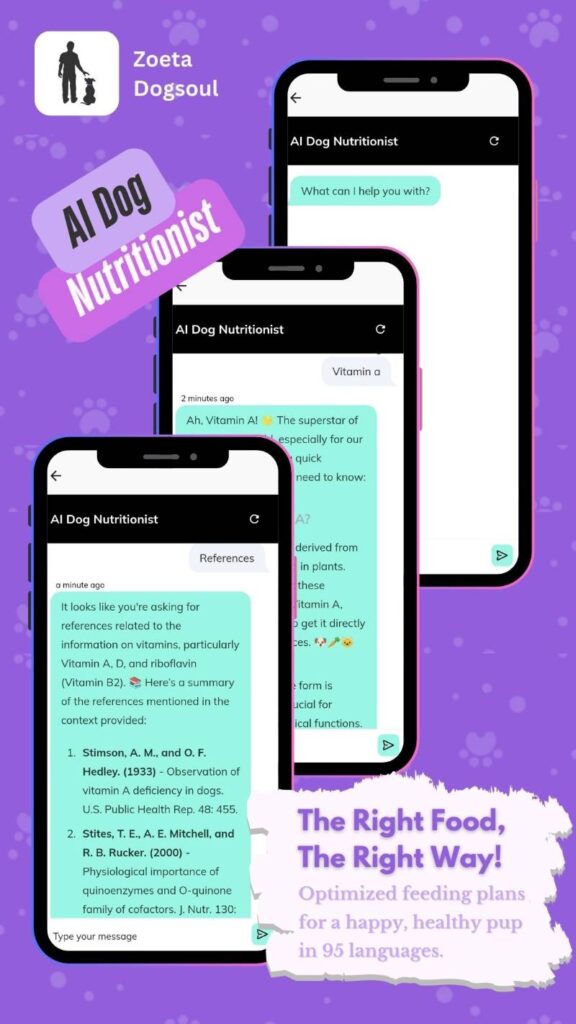
Nutritional Recommendations
Fueling the Bulldog Brain and Body
Nutrition directly impacts training success through energy levels, cognitive function, and motivation. The English Bulldog’s unique physiology requires specific nutritional support for optimal learning and behavior.
Metabolic Considerations:
Your Bulldog’s metabolism runs differently than athletic breeds:
- Lower caloric needs: 25-30 calories per pound of body weight
- Tendency toward obesity: Extra weight exacerbates breathing issues and reduces training stamina
- Sensitive digestion: Many Bulldogs have food sensitivities affecting behavior and comfort
Brain Food for Better Training:
Omega-3 Fatty Acids:
- Supports cognitive function and learning ability
- Reduces inflammation that can affect mood
- Sources: Fish oil supplements, salmon, sardines
Complex Carbohydrates:
- Provides steady energy for training sessions
- Prevents blood sugar spikes that create hyperactivity
- Options: Sweet potato, brown rice, oatmeal
High-Quality Proteins:
- Essential for neurotransmitter production
- Maintains muscle mass despite lower activity levels
- Best sources: Chicken, turkey, lamb, fish
Training Treat Strategy:
The “show me what’s in it for me” Bulldog mentality makes treat selection crucial:
Power Treats (for breakthrough moments):
- Freeze-dried raw meat
- Small cheese cubes
- Cooked chicken hearts
Daily Training Treats:
- Must be pea-sized to prevent overfeeding
- Deduct from daily calorie allowance
- Variety prevents boredom: rotate between 3-4 options
Feeding Schedule Impact on Training:
- Train before meals when food motivation peaks
- Avoid training immediately after eating (breathing concerns)
- Use portion of regular meals as training rewards
The NeuroBond nutritional philosophy: Food isn’t just fuel — it’s communication. Every treat exchange strengthens the bond and reinforces that cooperation brings good things.
Stubborn. Sensitive. Strategic.
Your Bulldog isn’t ignoring you — he’s interpreting.
Every command passes through filters of mood, motivation, and physical comfort. What looks like refusal is often an invitation to slow down, observe, and meet your dog where he actually is.
Connection precedes cooperation, always.
Sit beside him. Let silence speak. Your Bulldog’s loyalty doesn’t spring from control — it grows from trust built in stillness, respect, and subtle rhythm.

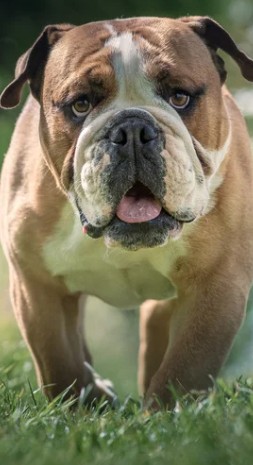

He’ll work with you, not for you.
The Bulldog doesn’t chase approval. He responds to meaning. Show him the why behind the what — and you’ll unlock a powerful partner, not just a pet.
Health Concerns
When Biology Influences Behavior
Understanding your English Bulldog’s health predispositions isn’t just medical knowledge — it’s essential training information. Physical discomfort directly impacts learning ability and behavioral responses.
Breathing and Training Intersections:
Brachycephalic Obstructive Airway Syndrome (BOAS):
- Affects 95% of English Bulldogs to varying degrees
- Signs during training: Excessive panting, blue-tinged gums, reluctance to continue
- NeuroBond adaptation: Multiple micro-sessions with extended rest periods
Training Environment Modifications:
- Indoor training during temperature extremes
- Elevated water bowls to ease drinking
- Non-slip surfaces to reduce exertion
- Harnesses instead of collars to avoid tracheal pressure
Joint and Mobility Considerations:
Hip Dysplasia and Elbow Issues:
- Common in 50-70% of Bulldogs
- Affects willingness to perform certain commands
- Pain can manifest as “stubbornness” or aggression
Adaptive Training Positions:
- Sitting on soft surfaces only
- Limiting duration of any single position
- Using ramps instead of teaching stair climbing
- Recognizing that refusal might mean discomfort, not defiance
Skin Fold Dermatitis and Behavioral Impact:
- Irritation in facial folds can cause head shyness
- May resist face handling or grooming
- Creates negative associations with touch if painful
The NeuroBond Health Protocol:
- Daily comfort check before training
- Adjust expectations based on physical state
- Use health challenges as bonding opportunities (gentle cleaning routines)
- Never push through obvious discomfort
When Health Masquerades as Behavior:
- Sudden aggression often indicates pain
- Increased “stubbornness” may signal developing health issues
- Changes in training responsiveness warrant veterinary evaluation
Your Bulldog’s health limitations don’t diminish training potential — they simply redirect it. The dog who can’t run agility can excel at scent work. The one who struggles with extended sits can master “touch” commands while standing.
Lifestyle & Environment
Creating the Optimal Bulldog Learning Ecosystem
Your English Bulldog’s environment profoundly influences training success. The NeuroBond approach recognizes that behavior doesn’t exist in a vacuum — it emerges from the intersection of genetics, relationship, and environmental design.
Space Configuration for Success:
The Bulldog Haven:
- Cool zones in every room (tile floors, cooling mats)
- Multiple water stations at varying heights
- Soft surfaces for joint comfort
- Clear pathways preventing navigation stress
Training Zones:
- Designate specific areas for different activities
- Consistency in location aids learning
- Non-slip surfaces mandatory
- Minimal distractions during initial learning phases
Social Environment Dynamics:
Family Integration: English Bulldogs thrive on inclusion but require:
- Consistent rules across all family members
- Designated “referee” for training consistency
- Children educated on Bulldog limitations
- Respect for sulking/alone time needs
- Bulldogs often prefer being the only dog
- Slow introductions essential
- Resource guarding tendencies require management
- NeuroBond work may need individual focus before group work
Daily Rhythm Optimization:
The Bulldog Schedule:
- Morning: Brief outdoor time before heat
- Mid-morning: Prime training window (alert but not hyperactive)
- Afternoon: Rest period (no training attempts)
- Evening: Second training opportunity
- Night: Calm bonding activities
Environmental Stressors to Minimize:
- Excessive heat or humidity
- Loud, sudden noises
- Chaotic household energy
- Inconsistent routines
The NeuroBond Environmental Principle: We don’t just train the dog — we train the entire ecosystem. Every environmental modification that increases your Bulldog’s comfort deepens their capacity for learning and connection.
Senior Care
Evolving the NeuroBond Through Aging
English Bulldogs begin showing age-related changes as early as 5 years old, with most considered seniors by age 6. This early aging doesn’t end training — it transforms it into something even more profound: deepening connection through adapted interaction.
Cognitive Changes and Adaptations:
Mental Shifts:
- Processing speed slows further
- New learning becomes more challenging
- Established routines provide comfort
- Confusion may increase, especially in evenings
NeuroBond Senior Modifications:
- Rely on established behaviors rather than teaching new ones
- Use familiar cues in new contexts
- Increase reward frequency for maintained behaviors
- Patience extends from seconds to minutes
Physical Adaptations:
Mobility Support:
- Ramps replace any jumping requirements
- Orthopedic bedding in all training areas
- Shorter sessions (2-3 minutes maximum)
- Focus on mental stimulation over physical activity
Sensory Changes:
- Hearing loss: Transition to visual cues
- Vision decline: Increase verbal communication
- Touch sensitivity: Gentler handling techniques
The Gift of Senior Training:
The NeuroBond philosophy shines brightest in senior years because:
- Connection matters more than performance
- Every interaction becomes precious
- The invisible leash strengthens through gentle presence
- Success redefined as mutual comfort and understanding
Meaningful Senior Activities:
- “Find the treat” with easy hiding spots
- Gentle massage as reward for calm behavior
- Short “patrol” walks focusing on sniffing
- Puzzle feeders adapted for reduced dexterity
End-of-Life Training Considerations:
As your Bulldog approaches life’s end, training becomes about:
- Maintaining dignity through adapted routines
- Communicating comfort needs clearly
- Preserving quality of life over skill maintenance
- Celebrating small daily successes
The senior Bulldog who simply makes eye contact when called has succeeded as fully as the young dog performing complex tricks. In the NeuroBond approach, connection is the ultimate achievement. 🐾
Conclusion: Is the NeuroBond Approach Right for You and Your English Bulldog?
After exploring the deep integration of English Bulldog nature with NeuroBond training principles, you might wonder if this approach aligns with your goals and lifestyle. Let’s be clear: This isn’t a method for those seeking a push-button dog who performs on command. It’s for those who understand that true partnership transcends obedience.
You and NeuroBond are perfectly matched if:
- You see training as relationship-building, not dominance
- You appreciate your Bulldog’s thoughtful nature rather than fighting it
- You value connection over competition
- You understand that 5 minutes of willing participation beats 30 minutes of forced compliance
- You’re patient enough to let your dog reveal solutions rather than imposing them
This approach may challenge you if:
- You need immediate, consistent responses to commands
- You’re looking for an agility champion or endurance athlete
- You believe dogs should obey “because I said so”
- You’re unwilling to adapt your environment to support your dog’s success
The NeuroBond Promise:
By embracing this approach with your English Bulldog, you’re not just training a dog — you’re entering into a profound interspecies dialogue. Your Bulldog will teach you about:
- The power of thoughtful decision-making
- The beauty of earned cooperation
- The depth of canine emotional intelligence
- The strength found in working with nature, not against it
Your Next Steps:
- Observe without agenda: Spend three days simply watching your Bulldog’s natural behaviors and communications
- Create one environmental improvement: Perhaps a cooling station or joint-friendly resting area
- Practice presence: Sit quietly with your Bulldog for 5 minutes daily, no commands, just connection
- Start small: Choose one simple behavior and approach it through the NeuroBond lens
- Document the journey: Notice changes in both your dog’s responses and your own understanding
Remember: Every English Bulldog carries centuries of breeding that prioritized independent thinking and emotional depth. The NeuroBond approach doesn’t try to override this heritage — it celebrates it. In doing so, you’ll discover that what many call “stubbornness” is actually a gift: a dog who thinks before acting, who forms deep bonds slowly but permanently, and who offers not blind obedience but conscious partnership.
Your Bulldog is already perfect in his bulldogness. The NeuroBond approach simply helps you both find the common language that transforms coexistence into true companionship. In the end, that’s what matters — not the tricks performed or commands obeyed, but the invisible leash of trust that connects two different species in profound understanding.
Welcome to the journey. Your Bulldog has been waiting for you to discover this path all along. 🧡

